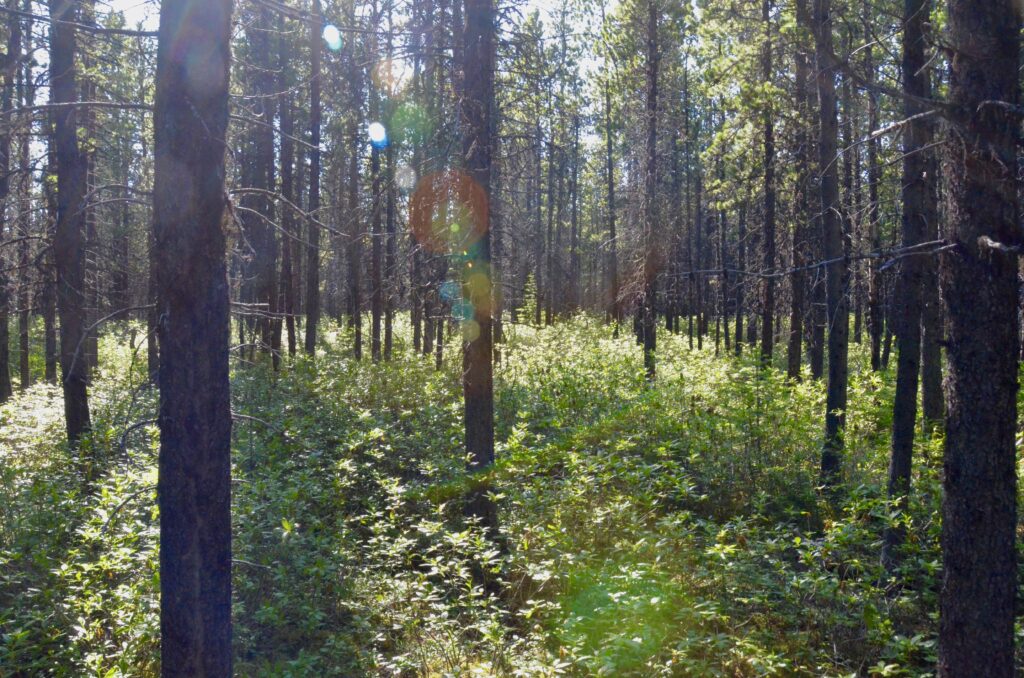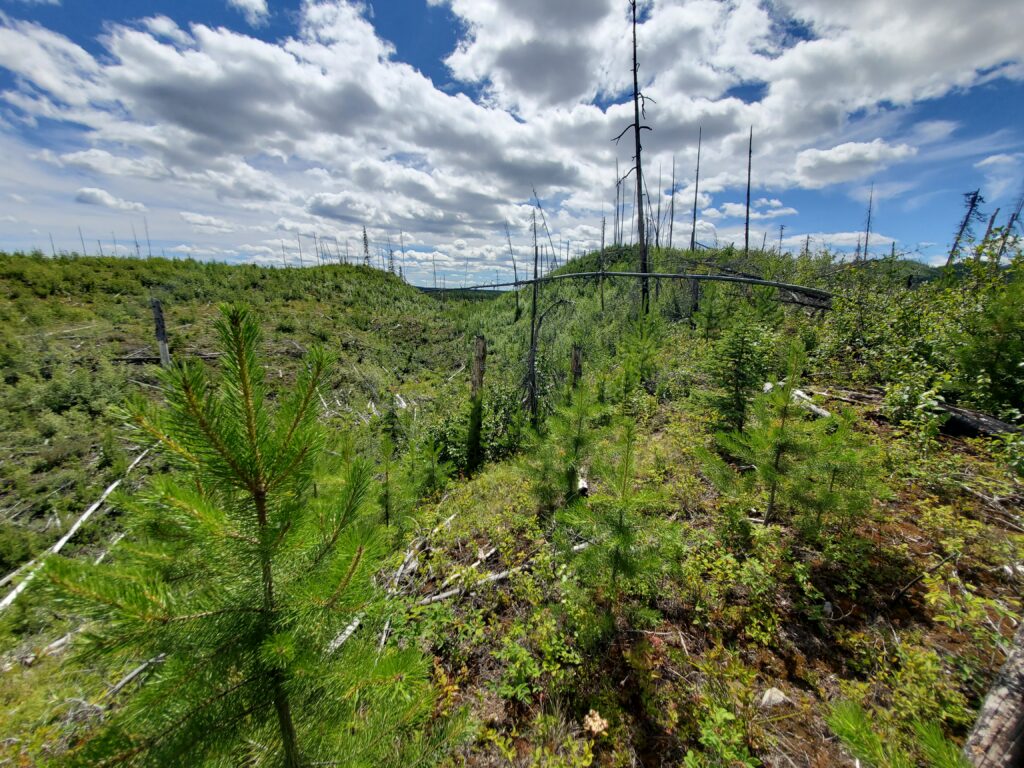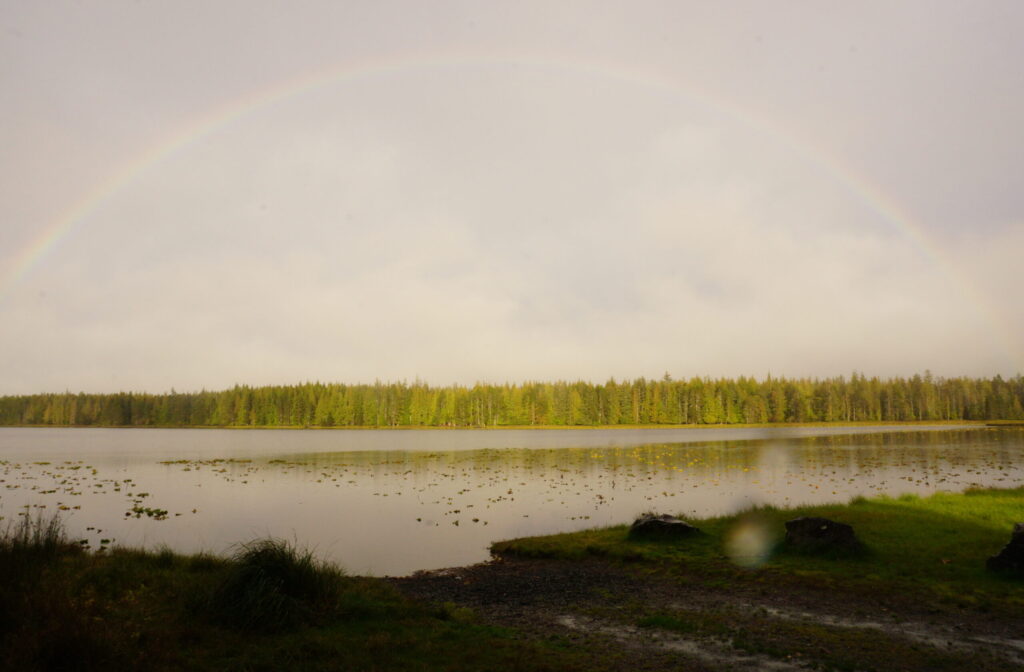Innovative Silviculture 101

Over the past several years, forest management and forestry practices have come under significant scrutiny within British Columbia. Through these pressures, conversations about forestry have become increasingly focused on diversifying the range of values forests are managed for. There has also been a large focus on identifying opportunities to increase the diversity of forest practices applied to the landscape and using forest management to reduce the divergence between managed and natural ecosystems (Palik and D’Amato 2017).
The term ‘silviculture’ has historically been defined as the ‘art and science’ of growing and tending forest crops (Nyland 1996). The treatment of forests as crops is rooted in a western-European worldview of silviculture that emphasizes commodity production and is likely to view other objectives (e.g., compositional and structural diversity, biodiversity, intrinsic ecosystem processes) as constraints (Puettmann et al. 2009, 2015).
In forestry, the commodity production paradigm has been undergoing a critical shift in the face of social and environmental change over the past decades and there is an increasing awareness that silviculture as a discipline needs to recognize and manage forests as complex adaptive systems (Puettmann et al. 2009). To achieve this, it is essential that stewardship be placed within the context of the silvicultural system – from evaluation, planning, harvesting, planting and tending, to harvesting again; this cyclical system embraces spatial and temporal diversity, where patterns and processes shift across scales and through time.

Photo: Jodi Axelson
With the clear and undeniable realities of a changing climate, and associated uncertainties, Achim et al. (2021) propose that there needs to be a holistic conception of silviculture that uses new sets of approaches, methods and practices to meet evolving societal demands and a multiplicity of desired outcomes in rapidly changing realities.
Innovative silviculture (also termed adaptive silviculture) creates a framework for stewarding multiple values at the stand and landscape scale, ranging from the physical to the spiritual.
Managing forests for multiple values such as water, wildfire resilience, wildlife habitat, forest health, old growth, etc. requires an interdisciplinary approach. Such an approach must ensure disconnected knowledge systems (e.g., western scientific approach, Indigenous knowledge) are bridged to structure research questions and projects, extension processes and products, and ultimately inform mainstream silviculture practice and policy.
Al Gorley and Garry Merkel released “A New Future for Old Forests” in 2020, which was the result of their independent strategic review of old growth forest management in the province. The review involved engaging and listening to British Columbians on how they value old forests, and how they should be managed. The recommendations in this strategic report, of which there were 14, were shaped by the recognition that society is undergoing a paradigm shift in its relationship with the environment, and the way society expects our old forests to be managed. The BC government accepted the report, and committed to the implementation of all 14 of its recommendations.
Recommendation 12 of the old growth strategic review called for the creation of a program that supports broad scale collaboration to develop and implement innovative silvicultural systems that maintain or enhance old forest values. It suggests that through collaboration we can test and demonstrate how silvicultural systems can be applied to manage a range of values and encourage new practices through knowledge sharing. The Silviculture Innovation Program (SIP) seeks to implement the intention of Recommendation 12 – and our story has just begun!

Photo: Jodi Axelson
This post authored by Dr. Jodi Axelson (Ops Team).
References
Achim, A., Moreau, G., Coops, N.C., Axelson, J.N., Barrette, J., Bédard, S., Byrne, K.E., Caspersen, J., Dick, A.R., D’Orangeville, L., Drolet, G., Eskelson, B.N.I., Filipescu, C.N., Flamand-Hubert, M., Goodbody, T.R.H., Griess, V.C., Hagerman, S.M., Keys, K., Lafleur, B., Girona, M.M., Morris, D.M., Nock, C.A., Pinno, B.D., Raymond, P., Roy, V., Schneider, R., Soucy, M., Stewart, B., Sylvain, J.-D., Taylor, A.R., Thiffault, E., Thiffault, N., Vepakomma, U., White, J.C., 2022. The changing culture of silviculture. Forestry: An International Journal of Forest Research 95, 143–152. https://doi.org/10.1093/forestry/cpab047
D’Amato, A.W., Palik, B.J., Franklin, J.F., Foster, D.R., 2017. Exploring the Origins of Ecological Forestry in North America. Journal of Forestry 115, 126–127. https://doi.org/10.5849/jof.16-013
Nyland, R.D. 1996. Silviculture: Concepts and Applications. McGraw-Hill Series in Forest Resources.
Puettmann, K.J., Coates, K.D. and Messier, C.C. 2009. A Critique of Silviculture: Managing for Complexity. Washington, DC: Island press
Puettmann, K.J., Wilson, S.M.G., Baker, S.C., Donoso, P.J., Drössler, L., Amente, G., Harvey, B.D., Knoke, T., Lu, Y., Nocentini, S., Putz, F.E., Yoshida, T., Bauhus, J. 2015. Silvicultural alternatives to conventional even-aged forest management – What limits global adoption? Forest Ecosystems 2, 1–16. DOI 10.1186/s40663-015-0031-x
